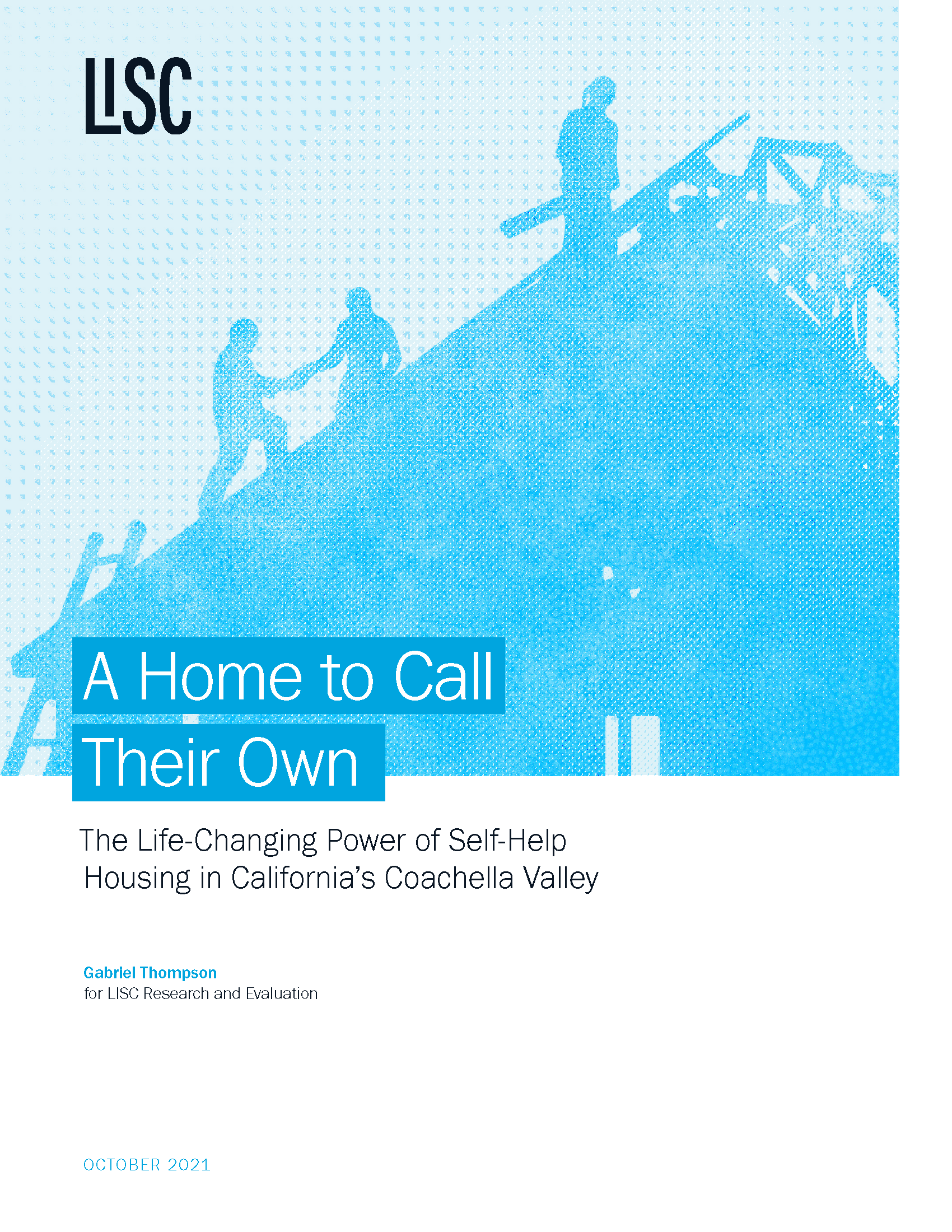A Home to Call Their Own
For hundreds of families who have built and moved into their own homes through the mutual self-help housing movement, it’s hard to overstate the sea change in wellbeing and stability that homeownership and the creation of a nurturing community brings about. In A Home to Call Their Own, a report from LISC Research, author Gabriel Thompson, who has written extensively on farmworkers in California, profiles a range of people from the agricultural Coachella Valley whose lives were transformed through their participation in self-help housing. This vivid and poignant piece dovetails with our recent white paper, From the Ground Up, a quantitative and qualitative analysis of the broad repercussions that stable, affordable housing can have on people’s lives and the places they live.
Introduction
It’s not quite 5:30 in the morning when Alfonso Cepeda pulls out of his driveway in the unincorporated community of Mecca and heads to the fields, deep in the heart of the Eastern Coachella Valley. The sun has yet to rise; once it does, the temperature will climb rapidly, reaching a high of 105 degrees. “Fresco” is the word Alfonso will later use to describe this June day. Cool. For visitors, it’s not the first word that comes to mind. But out here, along this 45-mile stretch of desert, summertime temperatures regularly exceed 110 degrees. In two weeks the region will hit 123 degrees, breaking an all-time record.
By 6 a.m. Alfonso has joined his farmworker crew, where he will spend the day supplying workers with empty boxes to fill with chili peppers and loading filled boxes onto trucks to be driven out of the field. It’s a less taxing job than harvesting, and a position he has earned. At 68, Alfonso is a farmworker elder, part of a generation that has worked these fields since the 1970s. Through nine different presidential administrations, he has braved the punishing heat to harvest grapes and lemons, oranges and dates.
“I don’t think about quitting, because I like to work,” he said. “I don’t want to sit at home and do nothing.”
At the opposite end of the Coachella Valley, in the city of Desert Hot Springs, Heather Boone is also leaving for work before most people are awake. For the last 13 years she has been a caregiver for adults with intellectual and physical disabilities. Before the pandemic, she provided educational and living-skills services at a day program visited by clients throughout the area. That service was halted with the shelter-in-place orders, and for the last year and a half she’s been working at a residential care facility for six adults.
“It’s a very special job because I get to work with people I love,” she said. She leaves her house before 6 a.m. and makes the short drive to the group home, where she helps her clients bathe and dress, then feeds them and begins the days’ activities. “It’s the kind of job where you do a little bit of everything. We read stories, do physical therapy, give them their medications, watch movies, work on numbers. And, of course, we find time to do a lot of joking around.”
There are obvious differences between Alfonso and Heather. Their paths to the Coachella Valley, to start: Alfonso grew up in a small farmworker village in Mexico; Heather relocated from the Bay Area. Alfonso speaks Spanish. Heather speaks English. Alfonso left school after the sixth grade to support his family. Heather graduated from high school and has completed extensive vocational trainings as a caregiver.
Yet they also have plenty in common. Both are essential workers—that category of people who were all too easy to ignore until the pandemic revealed just how much our society depends upon them. As COVID-19 spread across the country, many of us took refuge in our homes and Zoomed into work. In the Coachella Valley, Alfonso continued to report to the fields even as COVID rates skyrocketed among farmworkers, part of a mighty workforce that feeds the nation. As COVID-19 spread across the country, many of us took refuge in our homes and Zoomed into work. In the Coachella Valley, Alfonso continued to report to the fields even as COVID rates skyrocketed among farmworkers, part of a mighty workforce that feeds the nation. He eventually contracted the virus himself and was sick for nearly a month. For disabled individuals suddenly unable to leave their group home, Heather was the bright face that arrived each morning to tend to their physical and mental health, providing a connection to the world outside that had suddenly grown dangerous.
